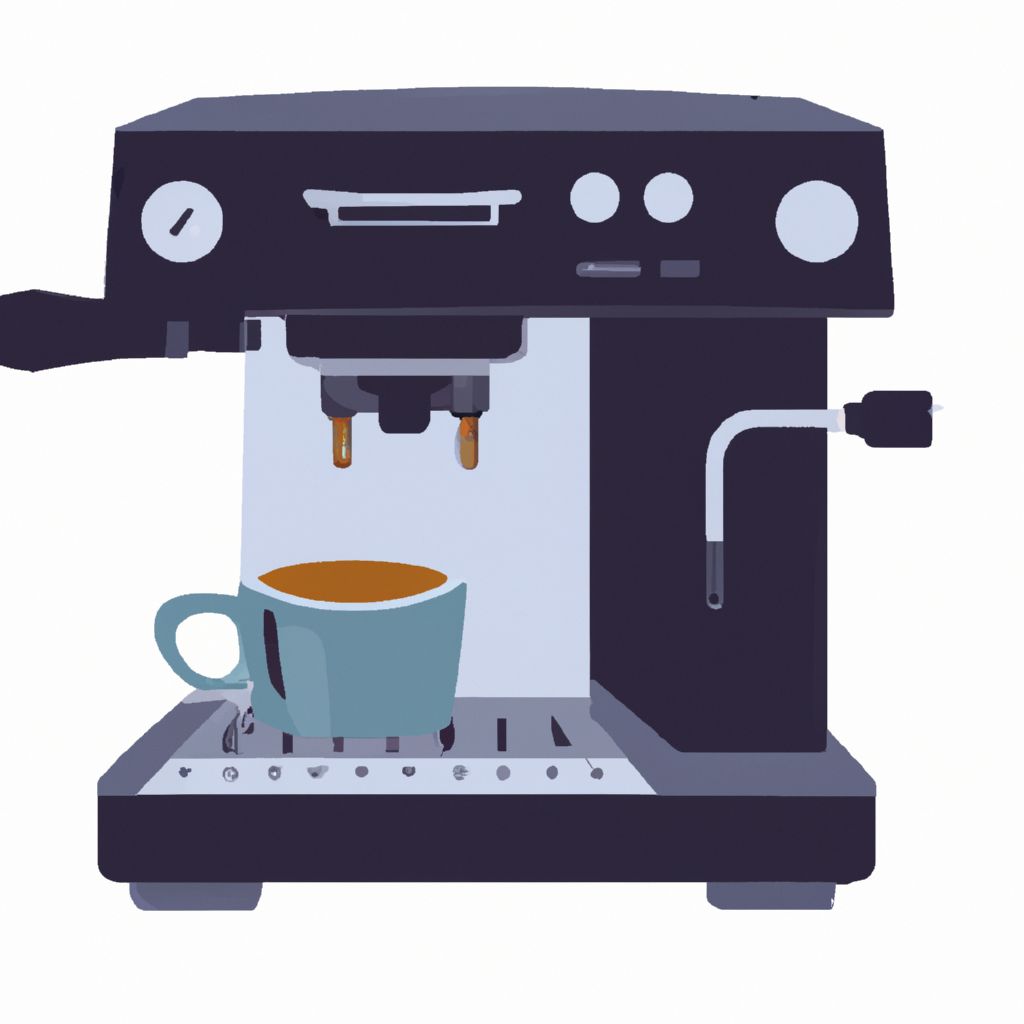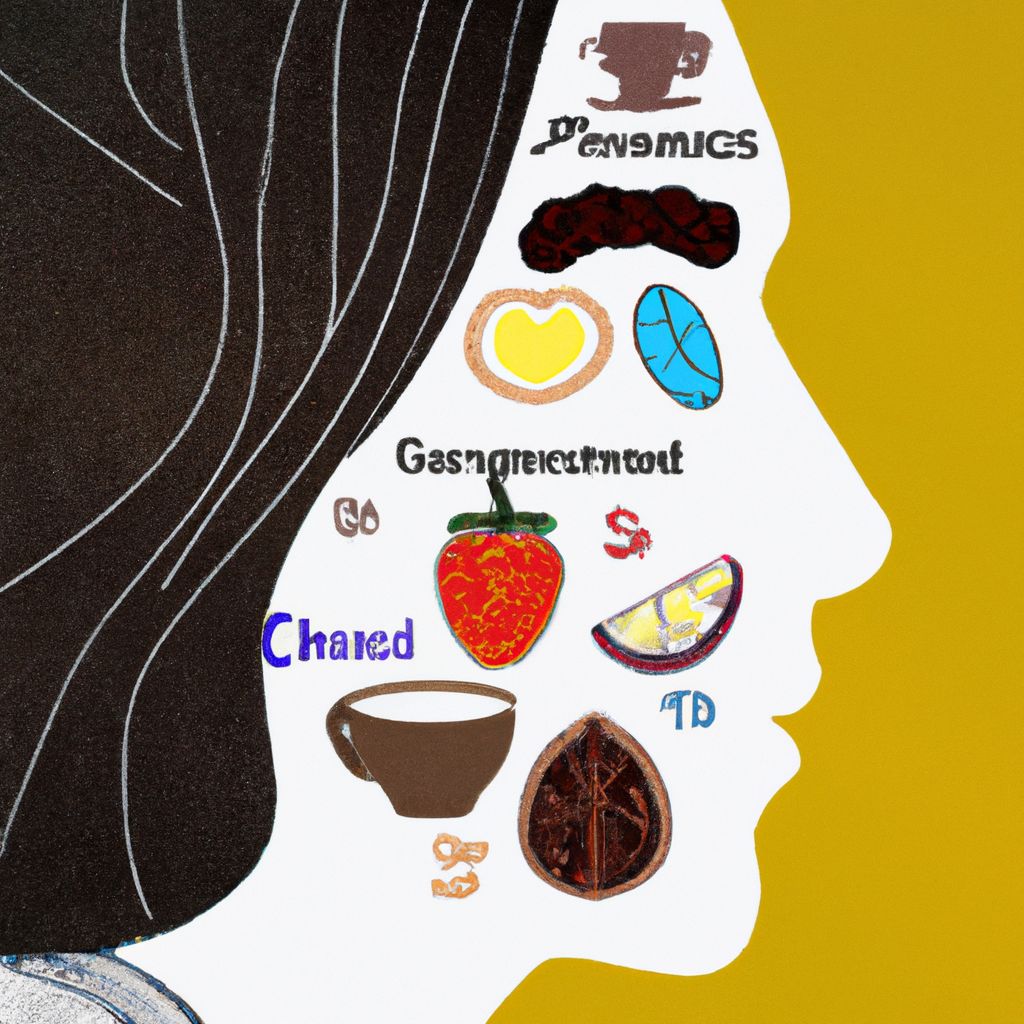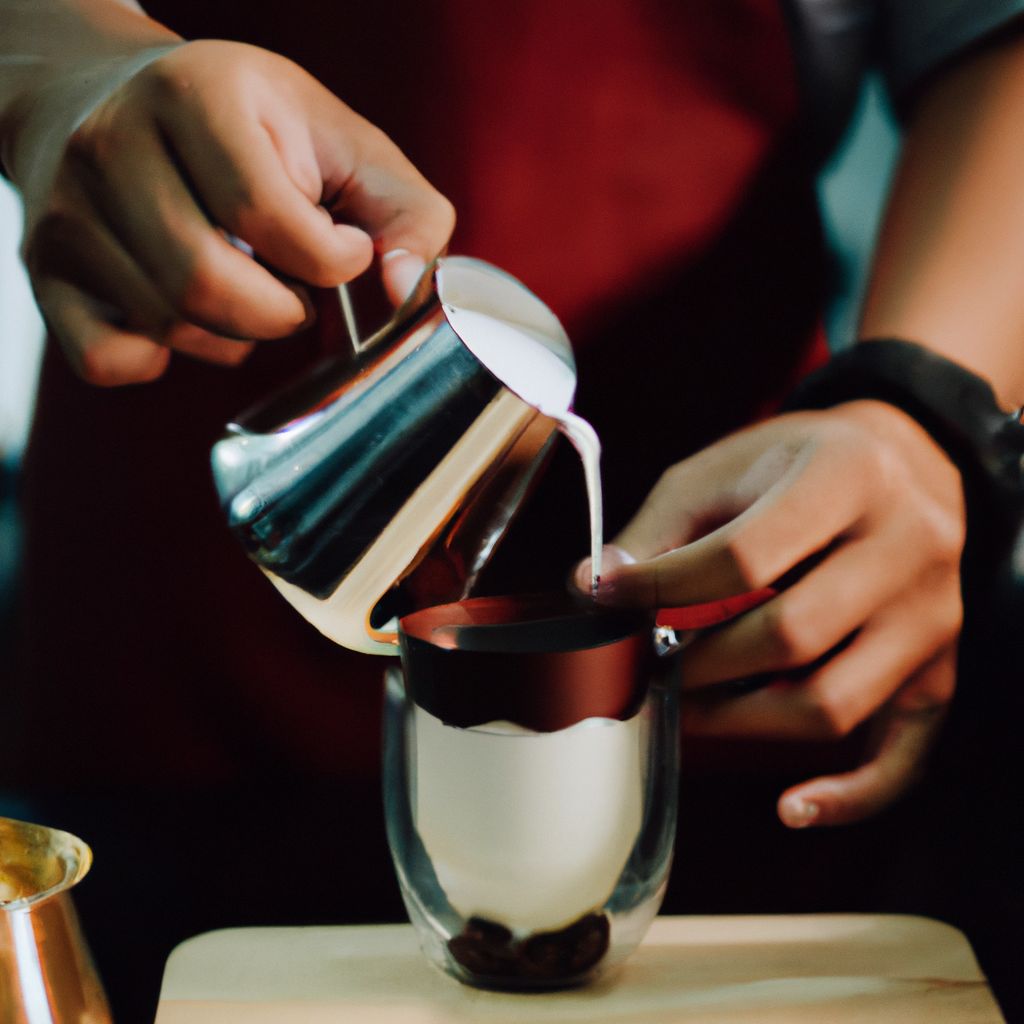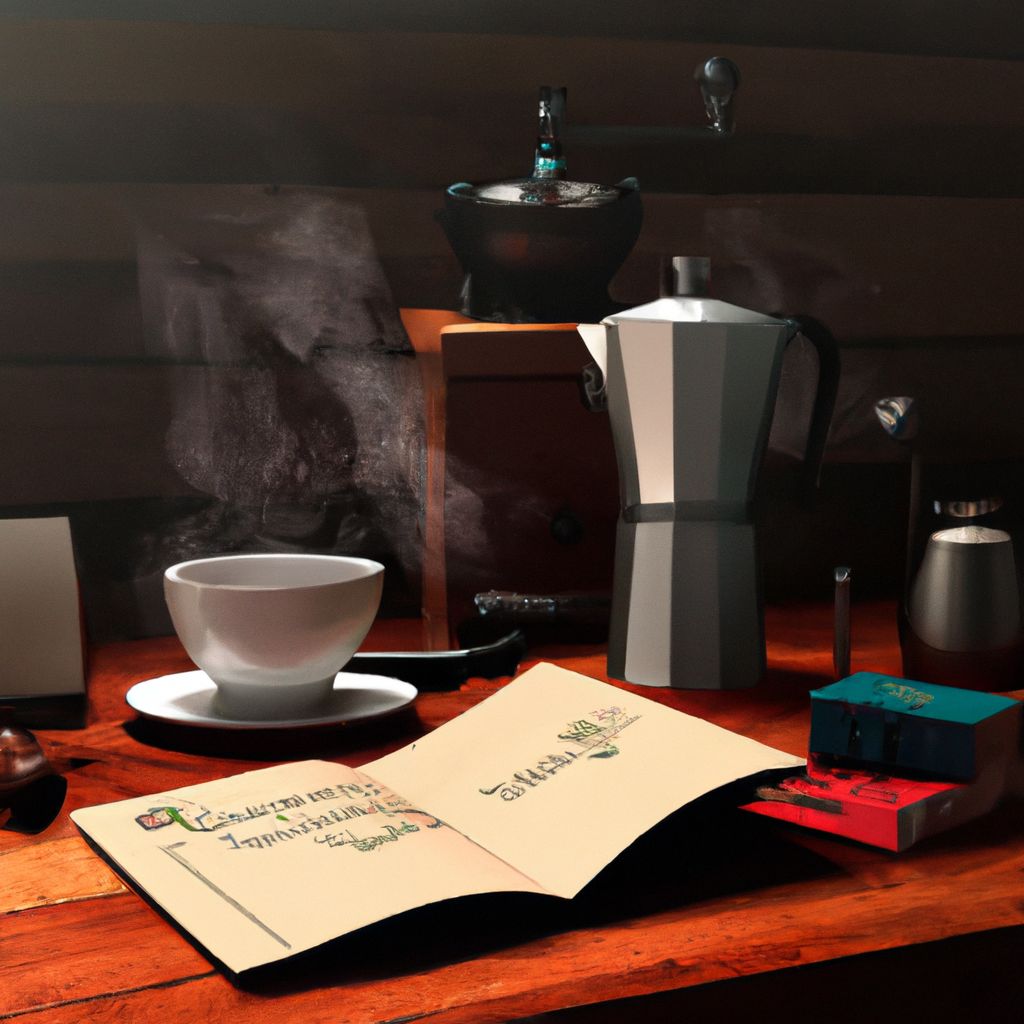- Introduction to Barista Skills
- Understanding Coffee: Types and Origins
- The Basics of Coffee Brewing
- Advanced Coffee Brewing Techniques
- Espresso Basics: From Bean to Cup
- Latte Art: An Essential Barista Skill
- Understanding and Operating Coffee Machines
- Maintenance of Coffee Equipment
- How to Taste Coffee: Developing Your Palate
- Creating Signature Coffee Drinks
- Professional Tips for Aspiring Baristas
- Conclusion: Continual Learning in Coffee Brewing
Introduction to Barista Skills

A barista's skill set is a unique blend of technical expertise, creativity, and a deep appreciation for coffee. It goes beyond simply pulling shots of espresso or pouring a cup of black coffee. Mastering barista skills involves understanding the science of coffee making, the art of coffee presentation and having an exceptional customer service attitude. Becoming a barista is a journey that requires patience, practice and a passion for coffee.
To truly master the art of coffee brewing, a barista needs to learn about the different types of coffee beans, understand the process of roasting, grinding, and brewing, and also have a knack for latte art. They need to be able to extract the best flavors from the beans and serve a cup of coffee that not only tastes good but also looks appealing. Baristas are also customer service professionals. They interact with people all day and their communication skills, friendliness, and ability to work under pressure play a crucial role in their job.
This article will guide you through the journey of mastering barista skills, diving deep into the art of coffee brewing, and will provide you with tips and techniques to hone your craft. Whether you're a novice just starting out or an experienced barista looking to enhance your skills, this guide will provide you with valuable insights. So, let's embark on this exciting journey to become a master barista!
Understanding Coffee: Types and Origins

Before we delve into the art of coffee brewing, it is essential to understand the types and origins of coffee. Coffee comes from two main species of plants: Arabica and Robusta. Each species has a variety of subspecies, which are grown in different regions around the world.
Arabica: This species is considered to be the highest quality of coffee and makes up about 60-70% of the world's coffee production. Arabica beans are grown in high altitudes, primarily in Latin America, East Africa, Arabia, and Asia. They have a wide range of tastes but are generally characterized by a delicate and slightly acidic flavor.
Robusta: These beans are easier to grow and more disease resistant. They are mainly grown in Africa and Indonesia and account for about 30-40% of the world's coffee production. Robusta beans have a stronger, more bitter flavor than Arabica, and higher caffeine content.
| Type | Flavor Profile | Primary Growing Regions |
|---|---|---|
| Arabica | Delicate, slightly acidic | Latin America, East Africa, Arabia, Asia |
| Robusta | Strong, bitter | Africa, Indonesia |
Within these two main types, you'll find countless varieties, each with their unique flavors and characteristics. These are often influenced by factors like the specific region and altitude where the coffee is grown, the soil condition, and the method of processing the coffee beans.
By understanding the origins and types of coffee, you can better appreciate the flavors and artistry that go into every cup of coffee you brew. It will also help you refine your barista skills, as different types of coffee require slightly different brewing techniques.
The Basics of Coffee Brewing

Mastering the art of coffee brewing starts with understanding the basics. Making a good cup of coffee is not only about choosing the right beans, but it's also about knowing how to brew it correctly. Here, we'll explore the fundamental principles and techniques behind coffee brewing.
Understanding the Coffee Beans
Not all coffee beans are created equal. The flavor, aroma, and quality of the coffee depend largely on the type of beans used. There are two main types of coffee beans: Arabica and Robusta. Arabica beans are known for their sweetness and acidity, while Robusta beans are known for their stronger, more bitter flavor and higher caffeine content.
Choosing the Right Grind Size
The size of the coffee grind plays a significant role in the brewing process. The grind size affects the surface area of the coffee that comes into contact with the water. The larger the grind, the slower the water will pass through, and the longer it will take to extract the coffee. Conversely, the smaller the grind, the faster the extraction.
Brewing Methods
There are a variety of brewing methods, each with its own unique flavor profile and technique. Some of the most popular methods include:
- Espresso: This method uses pressure to force hot water through finely ground coffee. It results in a concentrated, full-bodied coffee.
- Pour Over: This method involves pouring hot water over coffee grounds in a filter. The water then drips through the coffee and filter into a carafe or cup.
- French Press: This method involves steeping coffee grounds in hot water for a few minutes, then pressing the grounds to the bottom of the pot with a metal filter.
Mastering these basics will set you on the path to becoming a skilled barista. Remember, the key to a great cup of coffee lies in the details: the type of beans, the grind size, and the brewing method. Happy brewing!
Advanced Coffee Brewing Techniques

In the journey to mastering barista skills, understanding advanced coffee brewing techniques can make a significant difference in the quality and flavor of your coffee. Here are some techniques that can elevate your coffee brewing game.
Pour-Over Method
This method is favored for its clean, well-defined flavors. It involves pouring hot water over coffee grounds housed in a filter. The water then drains through the coffee and filter into a carafe or cup. Equipment like the Chemex or Hario V60 are commonly used for this method.
Cold Brew
Cold brew, as the name suggests, involves brewing coffee with cold water over a long period (12-24 hours). This reduces the acidity and bitterness commonly associated with hot brewing methods, resulting in a smooth, rich flavor.
French Press
The French Press method, also known as a press pot, involves steeping coffee grounds and hot water in a beaker. After steeping, the plunger is pressed to separate the grounds from the brewed coffee. This method allows for a fuller-bodied and robust flavor compared to other techniques.
Aeropress
An Aeropress combines the immersion and pressure methods. Hot water and coffee grounds are steeped together before being forced through a filter by pressing. This results in a concentrated and smooth cup of coffee.
Espresso
Espresso is a method of brewing coffee by forcing a small amount of nearly boiling water under pressure through finely ground coffee beans. Espresso is generally thicker than coffee brewed by other methods, has a higher concentration of suspended and dissolved solids, and has crema on top.
Siphon Brewing
A siphon brewer uses a heat source to create pressure and force water upward into an upper vessel, then removes the heat and lets the drop in pressure draw the brewed coffee through a filter and back into the bottom vessel. This method is known for producing a clean, refined cup of coffee.
Keep experimenting and practicing with these methods to find out which one suits your taste best. Remember, the key to mastering any skill is patience and consistency.
Espresso Basics: From Bean to Cup

Espresso Basics: From Bean to Cup
Mastering barista skills begins with understanding the journey of espresso - from bean to cup. This process involves a series of important steps, each contributing to the final taste, aroma, and quality of your espresso shot.
1. The Coffee Bean
Quality espresso starts with quality coffee beans. The best beans for espresso are typically Arabica due to their superior taste and aroma. These beans should be freshly roasted and ground just before brewing to preserve their full flavour profile.
2. The Grind
The grind of the coffee is of paramount importance in espresso brewing. It should be fine but not too powdery. The grind's consistency impacts the extraction rate - too coarse a grind will result in a weak espresso, while too fine a grind can result in a bitter and over-extracted shot.
3. Dosing and Tamping
After grinding, the coffee is dosed into the portafilter. The standard dose for a double espresso shot is around 18-20 grams. Proper tamping ensures an even distribution of coffee, which aids in achieving a uniform extraction.
4. The Brew
Once the coffee is tamped, it's time for brewing. The espresso machine forces hot water (between 195-205 degrees Fahrenheit) under high pressure through the compacted coffee grounds. This process should take between 20-30 seconds, yielding approximately 30ml of rich, aromatic espresso.
5. The Crema
The creamy, caramel-coloured layer that forms on top of a shot of espresso is called the crema. The presence and quality of crema are indicators of a well-extracted espresso shot. It should be thick, with tiny bubbles, and should linger for a few minutes after brewing.
Understanding each step in this process is crucial to mastering the art of espresso brewing. Practice and patience are key to perfecting your barista skills and serving up the perfect cup every time.
Latte Art: An Essential Barista Skill

Latte art is more than just an aesthetic enhancement to your cup of coffee. It's a testament to the skill and precision of the barista, and a symbol of the complexity and beauty of espresso-based drinks. As a barista, mastering latte art is a key step in your journey towards coffee brewing excellence.
The latte art process begins with the perfectly brewed espresso, poured into a warmed mug. The second, and equally important component, is the steamed milk. The milk should be frothed to a creamy consistency, creating microfoam that forms the canvas for your latte art.
Note: The key to a beautiful latte art is the perfect balance between espresso and milk. The milk should be poured slowly into the cup with the espresso, allowing the two to mix harmoniously.
There are myriad designs you can create with latte art, from the classic heart and rosetta shapes to more intricate designs like swans and tulips. These designs are largely dependent on the pouring technique and the movement of the wrist.
- Heart: This is one of the simplest designs, formed by pouring the milk straight into the cup and then lifting the jug higher while pouring more milk in.
- Rosetta: This design resembles a fern leaf and is created by moving the milk jug from side to side while pouring.
- Swan: This is a more complex design that requires careful control of the milk flow and precise movements to create the swan's body and neck.
Mastering latte art requires patience, practice, and a deep understanding of the behavior of coffee and milk. However, the reward is a visually stunning cup of coffee that is sure to impress any coffee lover.
Remember, latte art isn't just about the final product. It's about the journey of refining your technique and developing your own unique style. So, grab your coffee, your milk, and your passion, and start creating your own latte art masterpieces.
Understanding and Operating Coffee Machines

Understanding and operating coffee machines can seem daunting at first, but with a little knowledge and practice, you can master the art. Coffee machines vary in type and complexity, from the traditional espresso machines to the more modern automatic coffee machines. Here's a breakdown of what you need to know.
Understanding Coffee Machines
Coffee machines work on a simple principle - water is heated and forced through a 'puck' of ground coffee in a 'portafilter', resulting in a concentrated coffee brew. The key aspects you need to understand about coffee machines include:
- Type of Machine: The most common types are manual, semi-automatic, full-automatic, and super-automatic. The difference lies in how much of the brewing process is automated.
- Boiler System: Single-boiler machines are cheaper, but you can’t brew and steam milk simultaneously. Dual-boiler machines allow you to do both at the same time.
- Grinder: Some machines come with built-in grinders, but others require a separate grinder. The fineness of the grind affects the extraction process.
Operating Coffee Machines
To operate a coffee machine, follow these general steps:
- Fill the Water Reservoir: Use filtered water to fill the machine's water reservoir.
- Measure the Coffee: Use the machine's scoop to measure the right amount of coffee. The general rule is 1 to 2 tablespoons of coffee per 6 ounces of water.
- Turn on the Machine: Allow the machine to heat up for a few minutes before brewing.
- Brew the Coffee: For manual machines, you'll need to watch the process to ensure you don't over-extract. Automatic machines will stop on their own.
- Clean the Machine: After brewing, clean the machine to keep it in good working order.
With time and practice, you'll be able to adjust these steps to suit your taste and become a master in coffee brewing.
Maintenance of Coffee Equipment

Mastering the art of coffee brewing isn't just about learning how to pull the perfect shot of espresso or steam milk to the right temperature. It's also about knowing how to properly maintain your coffee equipment. This is crucial for ensuring that your machine is always in the best condition to make a great cup of coffee.
Regular Cleaning
Regular cleaning is essential for the longevity of your coffee equipment. This includes wiping down the machine after each use, cleaning the drip tray, and running water through the machine to clear out coffee grounds.
Descaling
Over time, mineral deposits from water can build up in your machine, affecting its performance and the taste of your coffee. Descaling is the process of removing these deposits. How often you need to descale will depend on the hardness of your water and how frequently you use your machine.
Replacing Parts
Some parts of your coffee machine will wear out over time and need to be replaced. This includes the grinder burrs, group head gasket, and shower screen. Keep an eye on these parts and replace them as needed.
Professional Servicing
Even with regular maintenance, it's a good idea to have your machine professionally serviced once in a while to ensure that it's in the best possible condition. A professional can spot potential issues that you might miss and can give your machine a thorough clean.
In conclusion, regular maintenance of coffee equipment is essential in mastering the art of coffee brewing. It not only improves the taste of your coffee but also extends the life of your machine, making it a worthy investment in the long run.
How to Taste Coffee: Developing Your Palate

Learning how to taste coffee is an essential part of mastering barista skills. Developing your palate not only enhances your enjoyment of coffee but also aids in producing the best brews. Here are a few steps to refine your coffee tasting abilities.
-
Smell the Coffee:
Before you take a sip, take a moment to smell your coffee. Aroma plays a significant role in our perception of flavor. Try to identify if you can sense any notable scents like chocolate, fruits, or nuts.
-
Sip and Slurp:
When you sip your coffee, slurp it. This allows the coffee to spread across your palate, reaching all of your taste buds. Notice the flavors that emerge first and those that linger.
-
Identify Flavors:
Try to identify the different flavors in your coffee. Is it fruity, nutty, or chocolaty? Is it sweet or bitter? The more coffees you taste, the better you will get at pinpointing these flavors.
-
Notice Body and Texture:
Pay attention to the body and texture of the coffee. Is it light and delicate, or thick and strong? The body of the coffee can influence how the flavor is perceived.
-
Keep a Coffee Journal:
Consider keeping a coffee journal to note down the characteristics of different brews. This will help you remember your preferences and understand the nuances of different coffee types.
Remember, tasting is subjective. Everyone's palate is different, so what tastes fruity to you may taste nutty to someone else. The important thing is to enjoy the process and have fun exploring different coffers.
Creating Signature Coffee Drinks

Creating signature coffee drinks is an essential skill that sets an accomplished barista apart from the rest. These unique concoctions not only showcase your barista skills but also provide customers with a unique coffee drinking experience. Here, we will guide you through the process of creating your own signature coffee drink.
Understanding Coffee Flavors
Firstly, it's important to understand the different flavors that coffee can offer. Coffee flavors can range from fruity to nutty, chocolatey, or even floral. By understanding these flavors, you can better pair them with other ingredients to create a unique drink.
Experimentation
Next, don't be afraid to experiment. Try different coffee beans, brewing methods, and ingredients to find unique flavor pairings. For example, a dark roast might pair well with chocolate syrup, while a light roast might be better complemented with a hint of citrus.
Balance
Balancing your flavors is key. You don’t want one flavor to overpower the others. For example, if you’re using a strong coffee, balance it with a milder syrup or milk. Similarly, a lighter coffee might need a stronger flavor to stand out.
Consistency
Lastly, ensure consistency in your drink. Whether it's the amount of coffee, the temperature, or the ratio of other ingredients, make sure it's consistent every time. This will ensure that your signature drink tastes the same every time a customer orders it.
Final Thoughts
Creating a signature coffee drink requires a deep understanding of coffee, a willingness to experiment, and a dedication to consistency. But with practice and creativity, you can create a unique coffee drink that showcases your skills and provides a unique experience for your customers.
Professional Tips for Aspiring Baristas

The journey to becoming a skilled barista requires patience, practice, and a deep understanding of coffee. Here are some professional tips to help aspiring baristas master their skills:
- Understanding Coffee Beans: The first step in mastering barista skills is gaining a deep understanding of coffee beans. Learn about the different types of beans, where they come from, and how the environment affects their flavor. This knowledge will help you choose the right beans for each type of coffee you make.
- Mastering Brewing Techniques: There are several brewing techniques that every barista should know. These include French Press, Pour Over, Espresso, Cold Brew, and more. Practice each technique and understand how it affects the taste and texture of the coffee.
- Perfecting Milk Steaming and Frothing: A key skill for making cappuccinos and lattes is knowing how to steam and froth milk. The goal is to achieve a creamy texture without overheating the milk. This takes practice, so don't be discouraged if you don't get it right the first time.
- Latte Art: Although not necessary, latte art can add a special touch to your coffee. It's also a fun way to showcase your skills. Start with simple designs and gradually work your way up to more complex patterns.
- Cleaning and Maintenance: Keeping your coffee machine clean and well-maintained is crucial for brewing the perfect cup of coffee. Regular cleaning also prolongs the machine's lifespan and ensures that your coffee always tastes its best.
Becoming a skilled barista is a journey of continuous learning and practice. So, don't rush the process, take your time to hone your skills and enjoy the art of coffee brewing.
Conclusion: Continual Learning in Coffee Brewing

In the ever-evolving world of coffee brewing, mastery is an ongoing journey. The art of brewing the perfect cup of coffee isn't something that can be achieved overnight. It's a skill that requires constant learning, experimenting, tasting, and adapting. As a barista, it's important to stay updated with the latest brewing methods, machines, and coffee bean varieties.
The beauty of the coffee brewing process lies in its complexity. From the exact temperature and water quality to the grind size and brewing time, each variable plays a crucial role in the final taste of the coffee. Understanding these elements and how they interact is key to honing your barista skills.
Remember, the best baristas aren't just those who can brew a good cup of coffee. They're the ones who never stop learning and refining their craft. They're the ones who understand that the pursuit of the perfect cup is a lifelong journey of exploration and discovery. So, keep experimenting, keep learning, and most importantly, keep brewing.
It may take time, but with patience, practice, and passion, you can master the art of coffee brewing and elevate your barista skills to the next level. Here's to your journey in mastering the art of coffee brewing!



